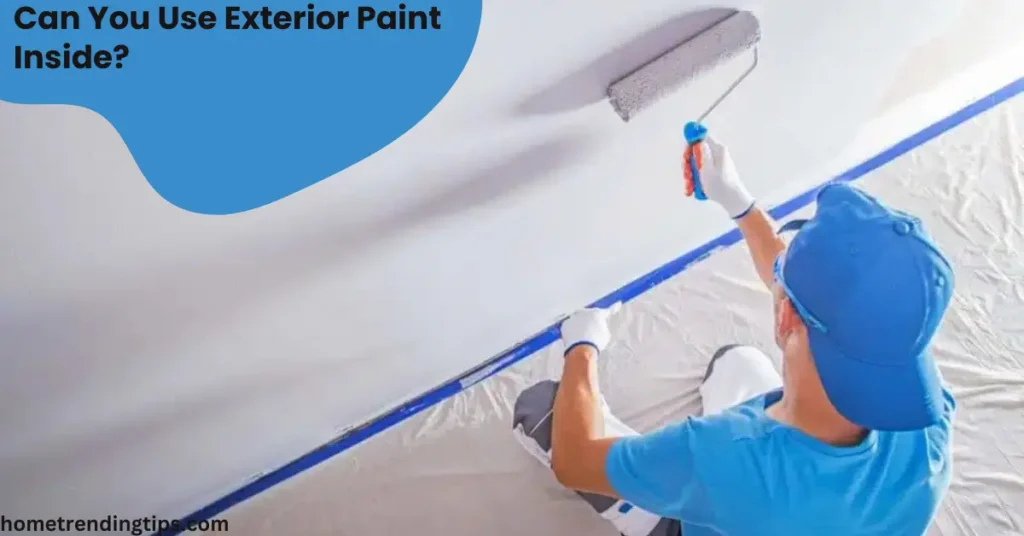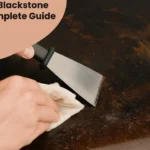If you’ve just wrapped up an outdoor painting project and have leftover paint, you might be wondering: Can I use exterior paint inside my house? While it seems like a smart way to save money and avoid waste, using exterior paint indoors isn’t always the best idea. This article explores the key differences between interior and exterior paint, the risks of using exterior paint inside, and where exceptions may apply. Whether you’re painting a bathroom, garage, or living space, read on before cracking open that leftover can.
Understanding the Key Differences Between Interior and Exterior Paint
Interior and exterior paints are formulated for different environments. While interior paint focuses on safety, easy cleaning, and low VOCs, exterior paint is built for durability against weather, UV rays, and moisture. Choosing the right type ensures lasting results and healthier indoor air.
Different Formulations for Different Environments
The most important factor in deciding whether you can use exterior paint inside lies in how the paints are made. Interior paint is designed specifically for indoor use, where surfaces face conditions like frequent cleaning, minimal UV exposure, and relatively stable temperatures. These paints contain fewer volatile organic compounds (VOCs) and are generally safer for enclosed environments.
On the other hand, exterior paint is formulated to endure harsh weather elements such as wind, rain, UV rays, and temperature fluctuations. It typically contains more additives and higher levels of VOCs to protect outdoor surfaces, making it more durable but less ideal for indoor use.
Durability vs. Safety
- Exterior paint is made to expand and contract, resist fading, and provide long-term protection in extreme conditions.
- Interior paint, in contrast, is formulated to be more rigid and durable against scuffing, cleaning, and abrasions found in day-to-day indoor life.
While both types offer durability, their intended environments differ greatly—especially when it comes to human health.
Why Someone Might Consider Using Exterior Paint Indoors
Durability and moisture resistance
Some homeowners consider using exterior paint inside for its added durability and moisture resistance. It might seem like a great option for bathrooms, kitchens, or basements where humidity is a concern.
Leftover paint or cost-saving reasons
You may also wonder, “Can I use exterior paint inside my bathroom or living room if I have leftovers from an outdoor project?” While this can appear cost-effective, it’s not always safe or suitable for every interior space.
What Happens If You Use Exterior Paint Indoors?
Using exterior paint indoors can lead to poor air quality due to high VOC levels, causing strong odors and potential health risks like headaches or respiratory irritation. It may also result in peeling, poor adhesion, and a longer drying time, making it unsuitable for typical indoor conditions.
1. Health Hazards from VOCs
One of the biggest concerns with using exterior paint inside is its VOC content. VOCs are chemicals that release toxic fumes as the paint dries and cures. Indoors, where ventilation is limited, these chemicals can build up and pose significant health risks such as:
- Irritation of the eyes, nose, and throat
- Headaches and nausea
- Central nervous system issues
- Long-term respiratory concerns
- Possible carcinogenic effects in prolonged exposure
Important Note: VOCs can off-gas for weeks—or even years—after the paint dries, meaning the air quality inside your home could suffer for a long time.
2. Unpleasant Odors and Slow Drying Time
Due to their chemical makeup, exterior paints often emit a strong, lingering odor that can make indoor spaces uncomfortable. They also have longer drying and recoat times, especially in enclosed, poorly ventilated areas. While an interior paint might be ready for a second coat in 1–2 hours, exterior paint could take up to 4 hours or more.
3. Poor Compatibility with Interior Surfaces
Exterior paint isn’t optimized for the needs of indoor spaces. It doesn’t bond as well to interior walls, especially in areas with minimal moisture or abrasion. The paint may peel, crack, or look uneven, resulting in the need to repaint sooner than you would with proper interior paint.
Where It’s Sometimes Acceptable to Use Exterior Paint Inside
Despite the risks, there are certain scenarios where using exterior paint inside may be acceptable—but with caution:
- Unoccupied spaces: Garages, sheds, storage rooms, or workshops that are well-ventilated and not regularly used by people or pets.
- Moisture-prone areas: Some homeowners apply exterior paint in bathrooms or basements to prevent mold and mildew. However, this should only be done if the space will remain unoccupied during and after the painting process.
Pro Tip: If you’re going to use exterior paint inside, opt for water-based (acrylic-latex) formulas with low VOC content and make sure the room has excellent airflow.
Why You Shouldn’t Use Interior Paint Outside (Either)
Just as using exterior paint indoors can be harmful, the reverse is also true: interior paint should not be used outdoors. Why?
- It lacks UV protection, water resistance, and anti-fungal agents.
- It will quickly fade, crack, or peel in sunlight or rain.
- It’s simply not designed to handle the stress of outdoor exposure.
Risks of Using Exterior Paint Inside Living Spaces
Indoor air quality issues
Interior spaces trap VOCs, which can affect your home’s air quality. This is particularly harmful for children, the elderly, and people with allergies or asthma.
Peeling, cracking, and poor finish
Exterior paint is made to expand and contract with temperature changes. Indoors, where temperatures are stable, this can lead to peeling, cracking, or a tacky surface over time. It doesn’t bond well to interior surfaces and can result in an uneven finish.
Alternatives and Safe Recommendations
Instead of repurposing your leftover exterior paint, consider:
- Donating it to local charities or community projects.
- Storing it properly for future outdoor touch-ups.
- Using interior-grade paint that’s specifically made for the surfaces and environments inside your home.
If you’re concerned about mold or moisture, look for interior paints labeled as mildew-resistant or designed for high-humidity rooms like kitchens and bathrooms.
Tips for Choosing the Right Paint for Each Room
Kitchens and bathrooms
Use semi-gloss or satin interior paint with mold-resistant properties. These finishes are easy to clean and hold up well to humidity.
Kids’ rooms, bedrooms, and living areas
Eggshell or matte finishes work best in bedrooms and living spaces. Look for low-VOC or zero-VOC interior paints to ensure safe indoor air quality, especially in children’s rooms.
What to Do If You Already Used Exterior Paint Inside
Steps to reduce risk
Ventilate the area immediately. Open all windows and doors, run fans, and use air purifiers if possible. Limit time spent in the room for at least several weeks after application.
When to repaint and how to do it safely
If you notice persistent odor or experience symptoms like headaches, it’s best to repaint using an appropriate interior paint. Sand the surface lightly, prime it with an indoor primer, and recoat with low-VOC interior paint for a safer, better finish.
Expert Advice and Industry Recommendations
Painter and manufacturer guidelines
Most paint manufacturers advise against using exterior paint inside. It voids warranties and doesn’t meet indoor performance expectations.
EPA and health safety insights
According to EPA guidelines, prolonged exposure to VOCs can lead to serious health effects. Choosing low-VOC interior paints helps maintain a healthier indoor environment for your family.
FAQs: Can I Use Exterior Paint Inside?
1. What happens if I accidentally used exterior paint indoors?
If used in a living space, it’s best to remove the paint or repaint with interior-grade paint due to VOC risks. Ensure proper ventilation until then.
2. Is it safe to use exterior paint in a bathroom?
Only if the bathroom will remain unoccupied and well-ventilated for days or weeks. Opt for mold-resistant interior paints instead.
3. Can I use exterior paint in a garage or shed?
Yes, garages, sheds, and other non-living spaces are generally safe for limited use of exterior paint, assuming good airflow.
4. Does exterior paint last longer than interior paint indoors?
No. It may degrade faster indoors due to poor adhesion and lack of scuff resistance, making it a poor long-term solution.
5. Can you mix interior and exterior paint?
Mixing is not recommended due to their differing formulations. It may compromise both the finish and the paint’s effectiveness.
Final Thoughts: Is It Okay to Use Exterior Paint Inside?
In short, no—it is not advisable to use exterior paint inside, especially in living spaces. The potential health risks, odor, and compatibility issues outweigh any short-term convenience or cost savings. Stick with interior paints for all indoor applications to ensure a safer, cleaner, and longer-lasting result.
Disclaimer
Content on Home Trending Tips is for informational purposes only. Please consult professionals before making home or garden decisions.



